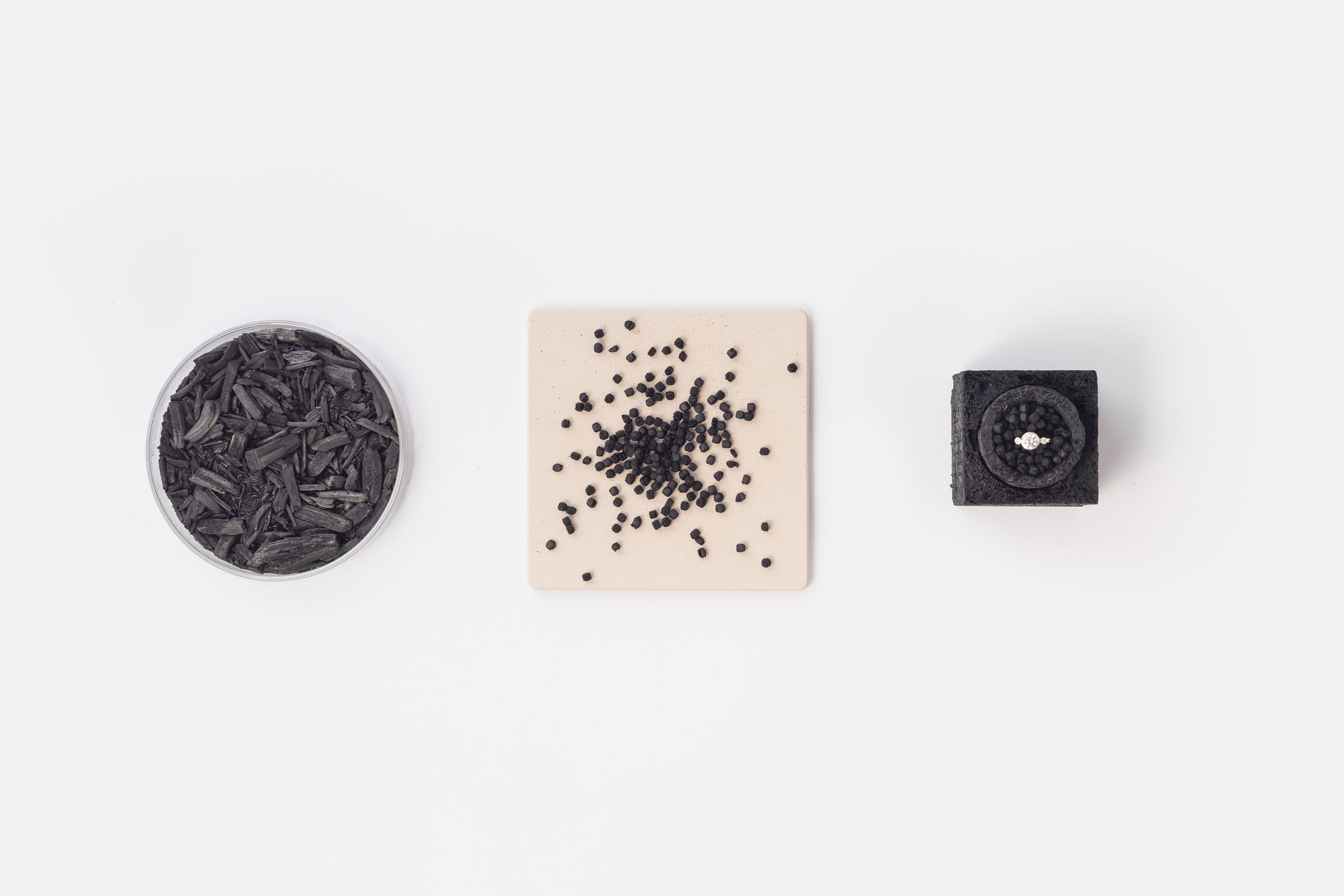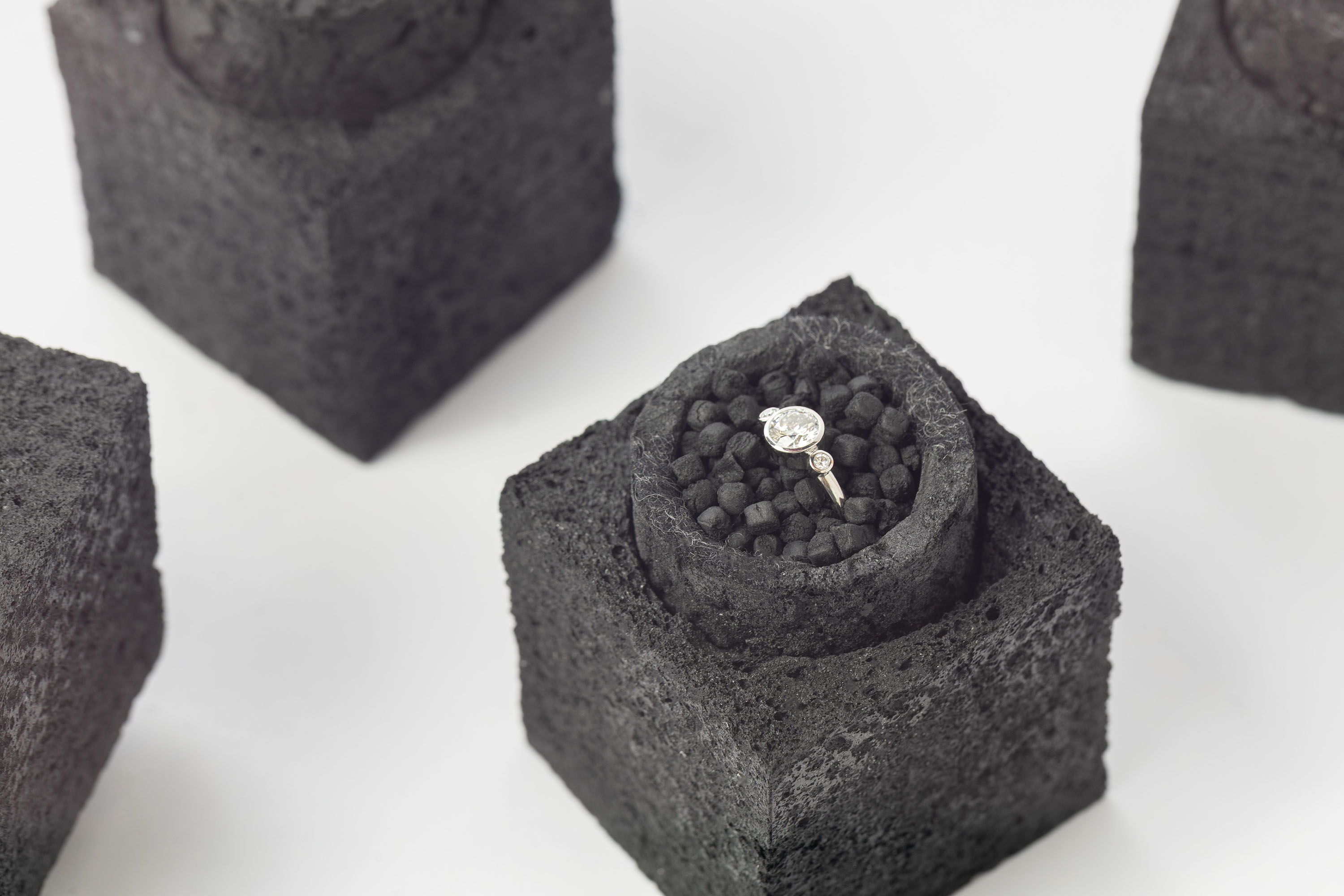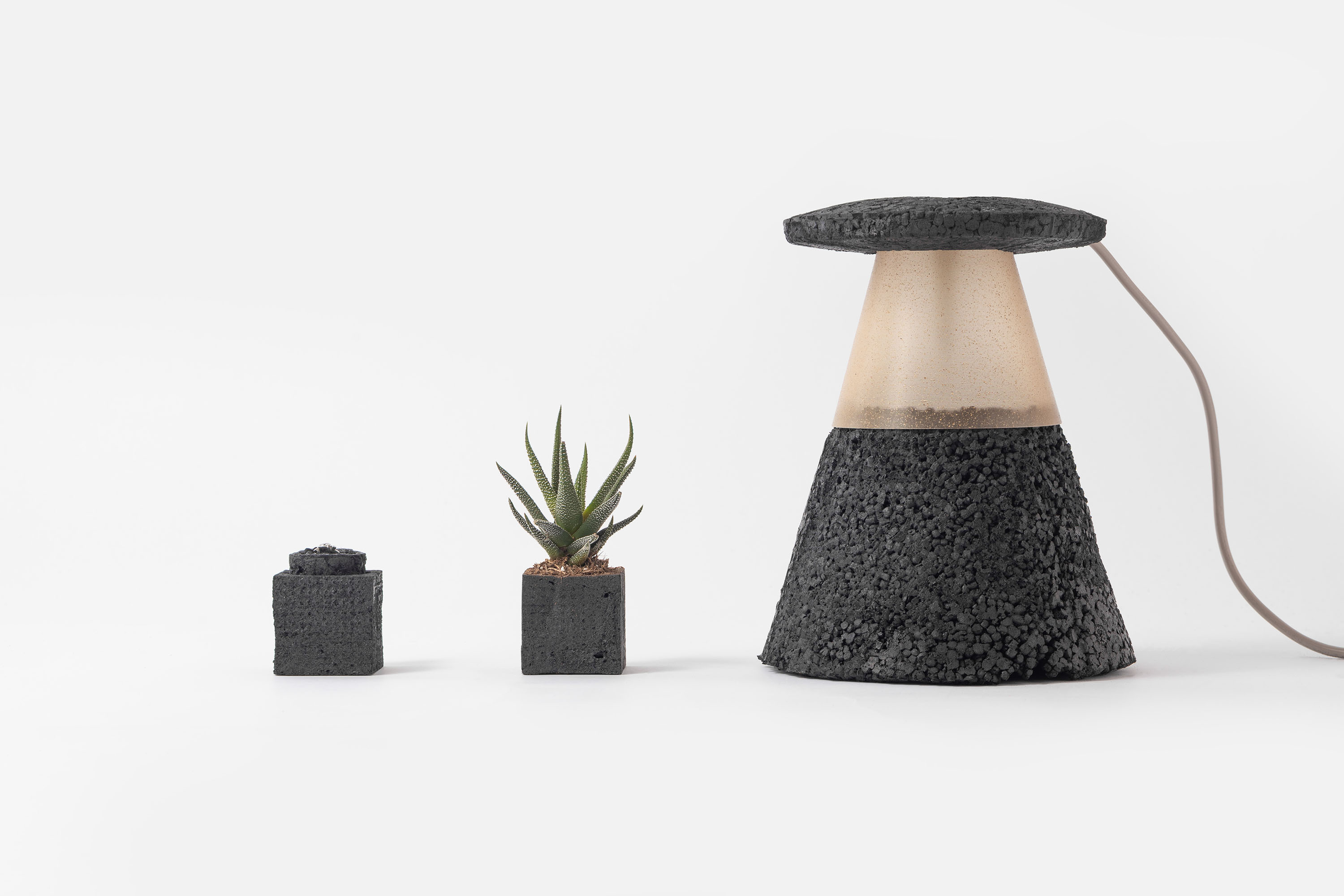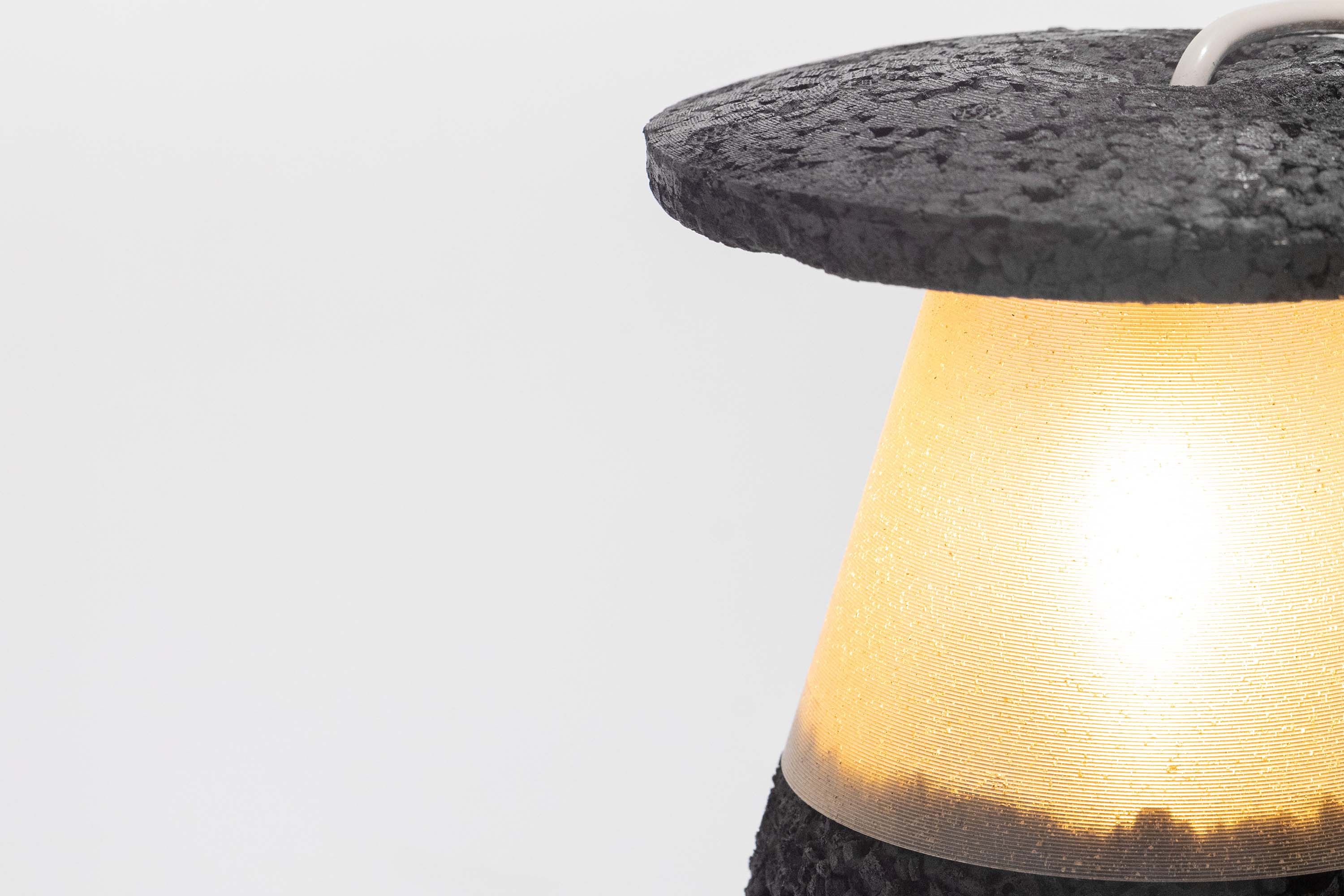Carbon Cell
Re-framing carbon: an exploration into carbon-negative objects


Carbon Cell is a London based material company. Carbon Cell is on a mission to ‘Replace Plastic Foam’. The company's flagship product does exactly that, a plastic-free foam made from carbon-negative biochar.
Our collaboration centred on application and storytelling. Carbon Cell brought a clear vision for the material’s future, imagining its role in packaging, insulation, and beyond. Realising that vision demands regulation, testing, and, above all, time we were asked to explore how we could raise awareness of Carbon Cell and open up other potential markets in parallel.
A positive environmental future requires an industry shift to materials and products that can actively lock away carbon, and regenerate natural ecosystems at their end of life. Tilting the scales away from the extractive and harmful impact of their petrol-based counterparts. But for these innovations to be widely adopted they need to go beyond simple comparisons. The design work was based on shifting the focal point to the advantages and unique properties of this waste derived bio-based foam, elevating its versatility, robustness and inherent beauty.
- Guy Naor, Senior Design Engineer
Carbon Cell’s foam is not merely a sustainable substitute for EPS, it is a material with its own distinct identity, defined by a unique balance of strengths and limitations. It offers superior compressive strength, excellent thermal insulation, and remarkable resistance to high temperatures, making it a high-performance choice in its own right.
Perhaps most strikingly, it is unapologetically black. While some may view this as a drawback, we see it as a defining aesthetic. Its coarse, blunt, and uncompromising appearance is a visual embodiment of carbon itself, both a reminder of its elemental presence and a bold statement of the carbon sequestration inherent in the material’s use.
This project was rooted in storytelling, developing narratives through product design that would communicate the material in ways that would capture people's imagination and help them imagine how Carbon Cell might be relevant to them. We did this by creating three product stories.


Question - Why shouldn’t yesterday’s waste serve us today, and tomorrow? By placing Carbon Cell alongside its purest counterpart, the diamond, people are challenged to reflect on the conventional notions of value. This juxtaposition, represented in a bold, geometric jewellery box, invites a deeper reflection on material worth, beauty, and the potential hidden in what is too often discarded.
Sequester - As CO₂ emissions continue to rise, so too must our efforts to remove it. Carbon Cell offers a path toward equilibrium in a world shaped by relentless consumption. By forming the material into everyday objects, there is the potential to sequester carbon for hundreds of years, lightening the burden on our planet, one product at a time.
A buildable lamp explores this. In this execution, the lamp’s body protects core components during transit, then transforms into the product’s defining external form. A simple tapered stacking geometry results in a production-friendly form with a distinct personality, much like Carbon Cell itself.
Soil - Everything returns to the soil. Carbon Cell honours this cycle with intention, giving back value after fulfilling its purpose. As a form of biochar, it enhances soil structure, boosts nutrient and water retention, and creates optimal conditions for plant growth. Once embedded in the earth, Carbon Cell naturally breaks down within weeks, unlike petrochemical foams that linger for decades, burdening the planet long after their use.
Durable enough to ship plants, yet safely home-compostable, Carbon Cell offers a smarter alternative to the millions of plastic planters that are discarded every day. With intentionally simple and scalable forms, the geometry echoes the cube motif that defines Carbon Cell’s visual identity

Carbon Cell is just beginning its journey. The team is continually exploring and refining the manufacturing process - which currently involves placing pellets into a mould that expand and fuse when heat is applied - and are making progress on their mission to solve the challenge of EPS waste and pollution. However, our collaboration highlights that the potential applications for Carbon Cell stretch far beyond this.